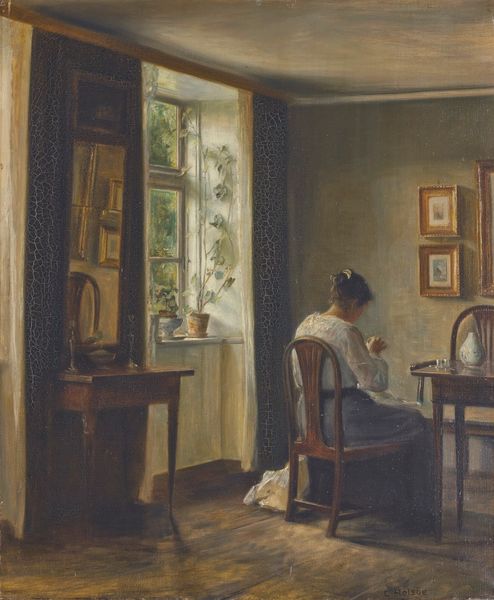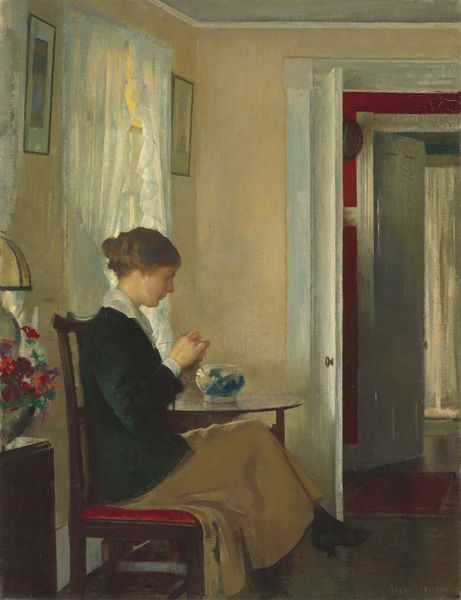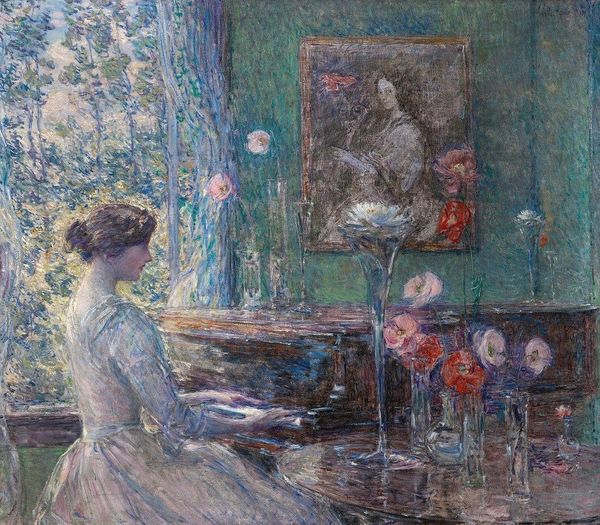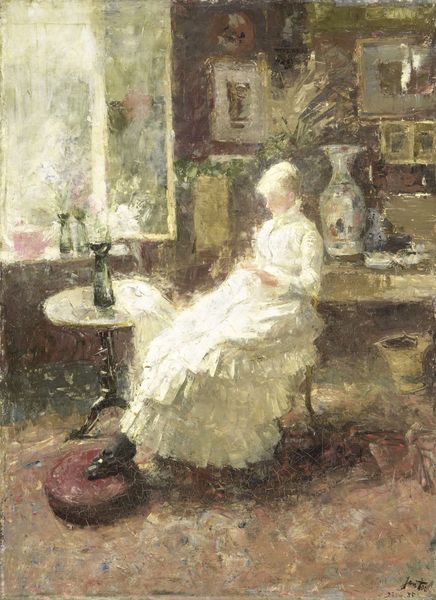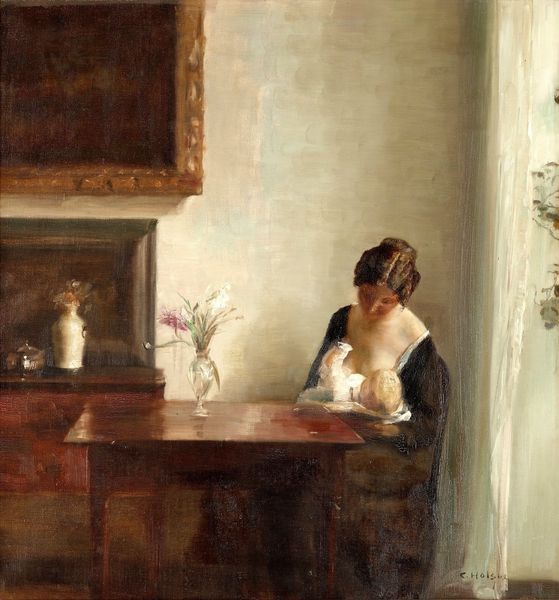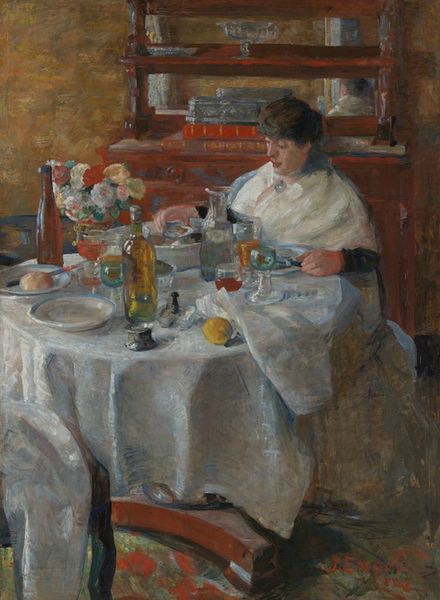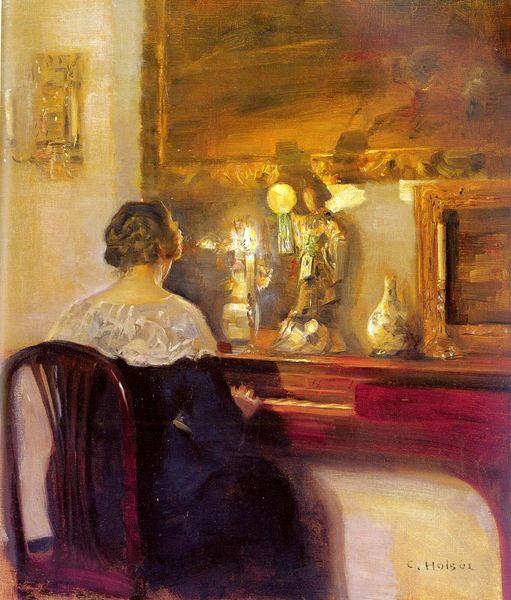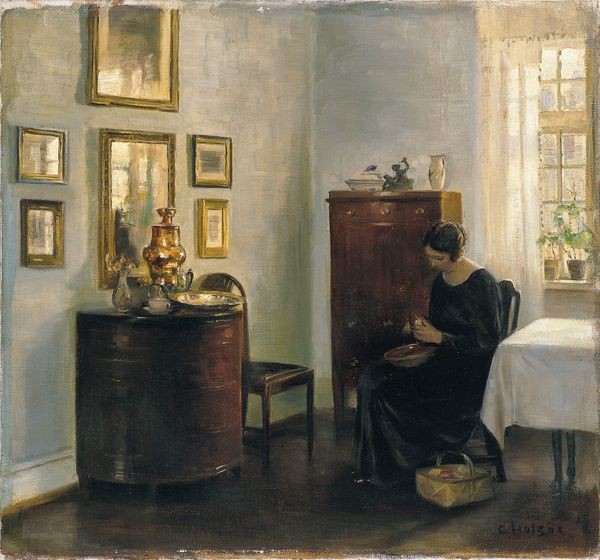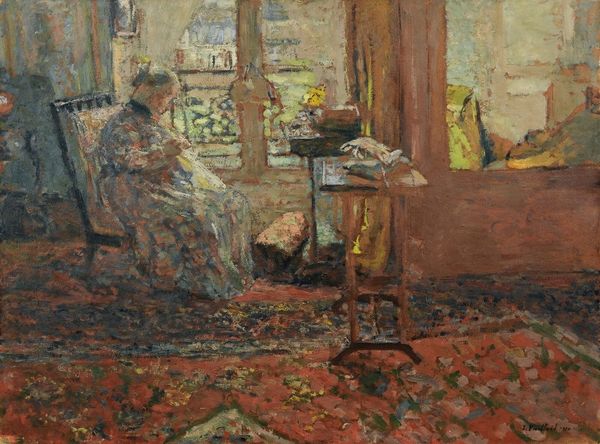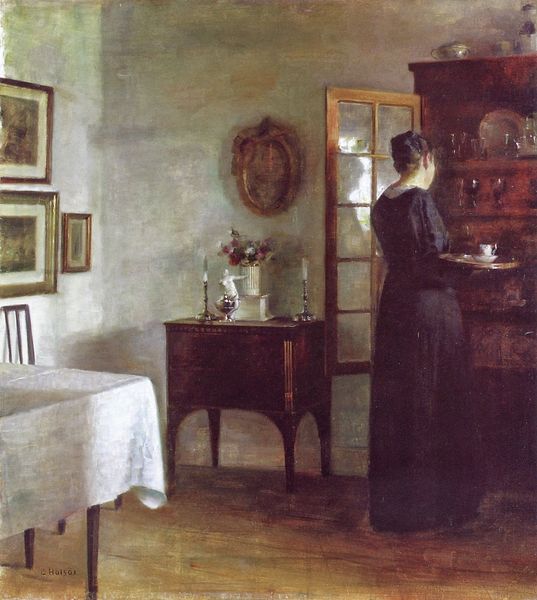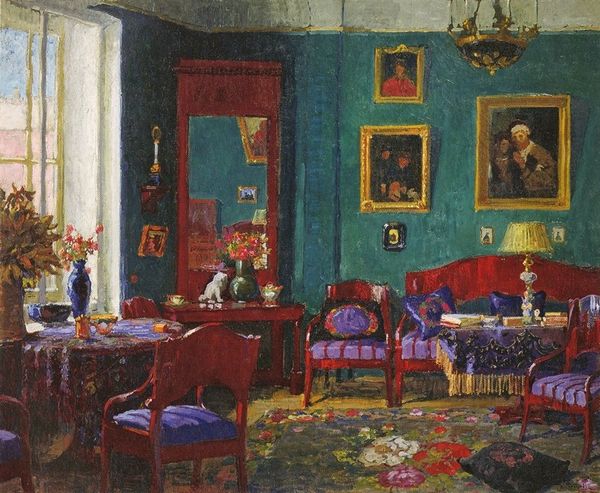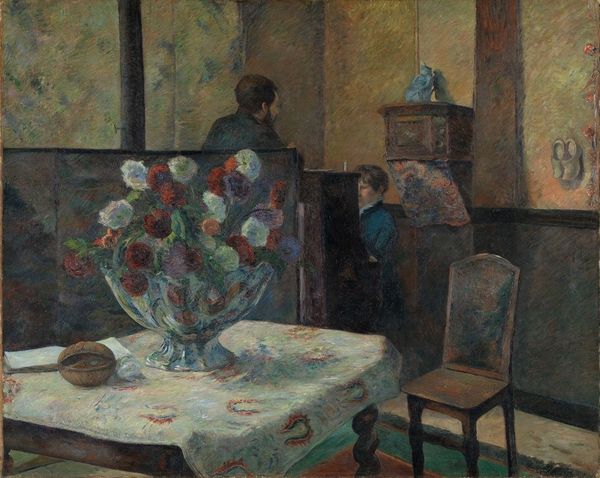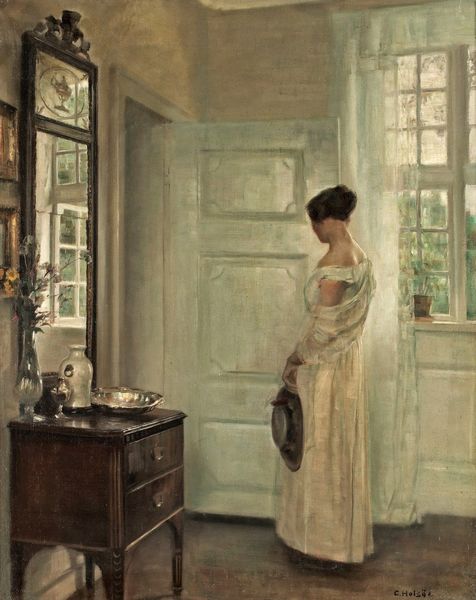
Dimensions: support: 533 x 540 mm
Copyright: CC-BY-NC-ND 4.0 DEED, Photo: Tate
Editor: Harold Gilman's "Edwardian Interior" shows a woman seated in a room filled with objects and pictures. It feels very intimate, almost claustrophobic. What's your interpretation of this space? Curator: It's a fascinating glimpse into Edwardian domesticity. Consider the social constraints placed upon women of that era. How might this interior, seemingly a sanctuary, also represent a gilded cage, filled with prescribed roles and expectations? Editor: So, the objects aren't just decorative, but symbolic? Curator: Precisely. The wallpaper, the arrangement of ornaments, the very act of sitting passively—they all speak to the limited agency afforded to women. What does the woman's posture communicate to you? Editor: She seems contemplative, maybe even resigned. I hadn't thought of the room as a representation of societal constraints before. Curator: Art allows us to critically examine these power dynamics. It’s not just about what's depicted, but what's implied about the lives of those within the frame. Editor: That's a powerful way to look at it; thanks for sharing!
Comments
tate 8 months ago
⋮
http://www.tate.org.uk/art/artworks/gilman-edwardian-interior-t00096
Join the conversation
Join millions of artists and users on Artera today and experience the ultimate creative platform.
tate 8 months ago
⋮
This picture shows the drawing room of the Rectory at Snargate, in Romney Marsh, where Gilman's father was the vicar. The girl is the artist's youngest sister, Irene. The fashion for depicting domestic interiors seems to have been especially strong among pupils of the Slade School, which Gilman attended from 1897 to 1901. His work developed quickly away from the early style shown here to one which emphasised colour and texture. This can be seen in a later work, Lady on a Sofa, painted around 1910, shown to the left/right. Gallery label, September 2004
